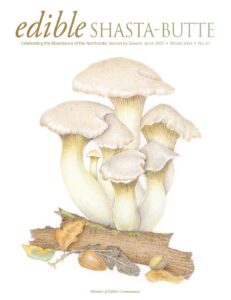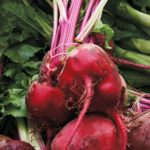
We bring you organic peaches, other fresh fruit, lavender, and a family-friendly pumpkin patch from this idyllic location, all from the very tip of northern California.
Happy spring! With weeks of fluctuating temperatures and bud and flower break, it is time to tend to the Orchards’ health to ensure we produce the highest quality, best-tasting peaches, nectarines, and apricots. Hunter Orchards is a family-owned, certified organic farm tucked away at the northern end of Shasta Valley, in Grenada. We bring you organic peaches, other fresh fruit, lavender, and a family-friendly pumpkin patch from this idyllic location, all from the very tip of northern California. While we are known for our never forgotten juicy fruits and our warmhearted pumpkin patch filled with loving memories by many, the Orchards didn’t just appear out of nowhere.
Hunter Orchards was an utterly vast land back in the 1970s. Founders Marie and John Hunter planted the first rows of trees in the rich sandy loam soil on the twenty-acre property among other holdings, mostly grain and grazing operations across the valley. Their enthusiasm and integrity ensured a strong foundation, guaranteeing that everything they touched was thoughtfully executed without disturbances to the land’s ecosystem in a valley that is home to many insects, birds, reptiles, and small mammals. They sustainably built onto the orchard one tree at a time.
John Tannaci and Kirsten Olsen, the second owners, improved upon the infrastructure and expanded the orchard. What started with just a few dozen trees quickly became 400 and then 1400, turning Hunter Orchards’ humble business into a thriving, prosperous fruit orchard. In the 90s, the orchard was officially certified organic by California Certified Organic Farmers and today offers 100% organic produce to the community to ensure high-quality, nutrient-dense produce.
BUILDING ON THE PAST
My wife Julie and I are the fourth owners of Hunter Orchards. We are proud to carry on the traditions and sustainable farming practices established by all the previous owners. We purchased the Orchards in the spring of 2020 and moved five hours north from Santa Rosa to live and farm in this beautiful location.
As a retired boat captain, I had limited experience in commercial agriculture but deep respect for the environment. We had a front yard micro-farm in Santa Rosa that was a hit of the neighborhood and became an outlet for me to interact with nature. I have had to quickly scale up from these humble beginnings to running a twenty-acre farm, and I hope to continue to expand Hunter Orchards over the next five years. Even though I picked up the farm without previous commercial farming experience, I immediately fell in love. And since 2020, I have expanded my agricultural skills. You have to go for it in life. If I mess up, I know I have room for growth and will find out how to fix my mistakes.
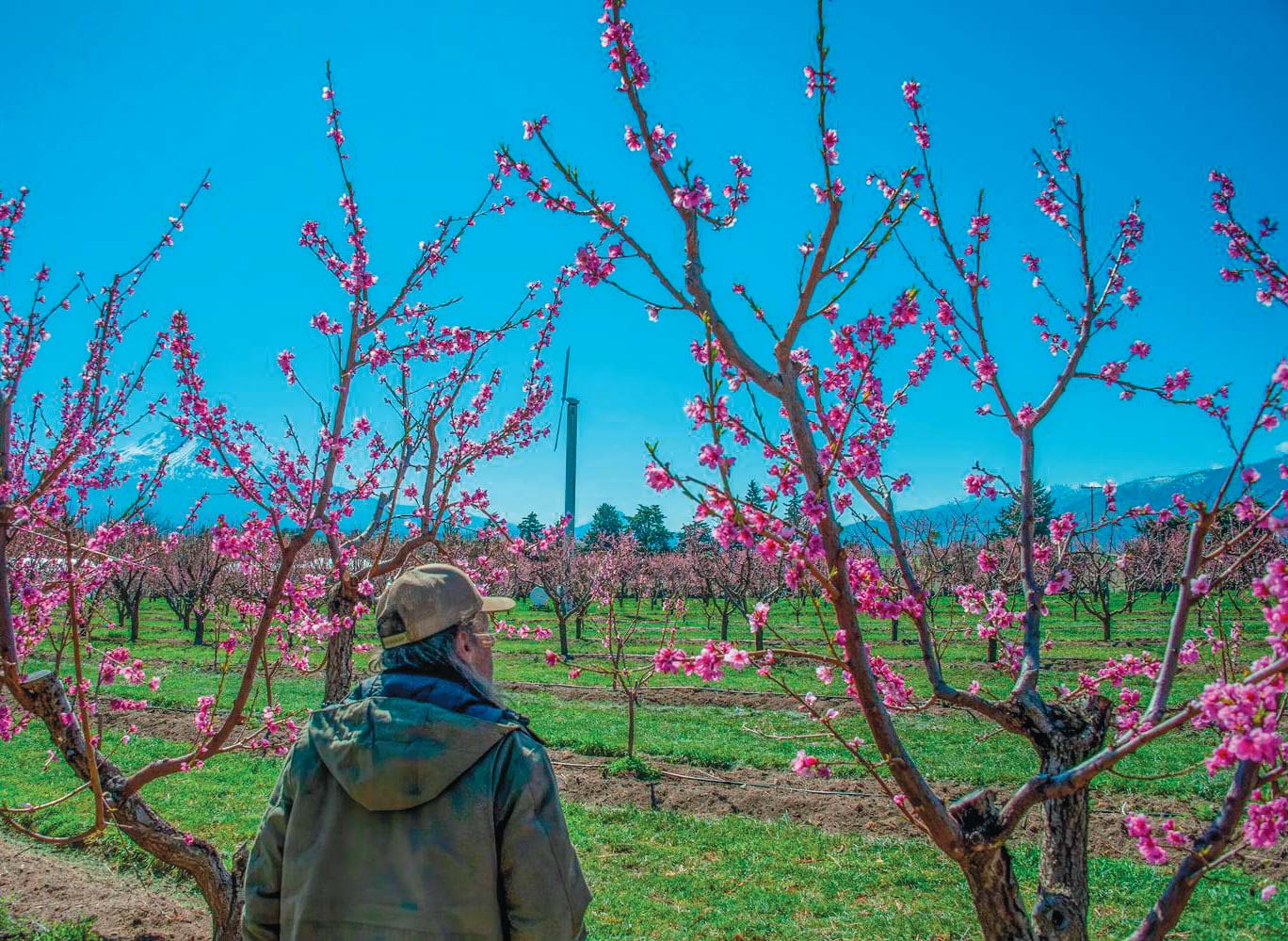
Peach blossoms typically bloom starting the end of March. . . . Then the Orchards become a sea of pink and white blossoms. Our apple trees offer white blossoms next to the peaches and add a stunning cloudlike effect. It is a beautiful piece of heaven.
Erik Erickson has good reason to monitor the peach blossoms for frost damage, which can occur in the Mount Shasta area into mid-spring.
EACH DAY SOMETHING NEW
Each season presents itself with different challenges, and the Orchards have various operations based on the current season. There is a never-ending list of things to do on the farm in the spring, and I love that. Each day there is something new to accomplish. Depending on the year’s weather, it may feel like spring in late February or not until April, but generally, March is when things really start to pop. While the Orchards start to come alive, I am constantly working on special projects to improve the farm and make it more efficient. I used to walk across the Orchards to turn on the irrigation. It is incredible how much those extra minutes add up each year. Now I have an app on my phone that allows me to turn on and off the irrigation.
Spring’s temperature fluctuations range from the 60s and 70s down to the teens and can create issues for budding and blossoming trees. Shasta Valley is no stranger to hard freezes in the middle of spring. With both warm and cold spells, our challenge in the spring is to make sure the trees are happy. We take steps to protect the peach buds and blossoms that can be destroyed when temperatures drop below 28 degrees Fahrenheit. Frost protection becomes my number one priority in February if the trees are budding. We have implemented an updated temperature tracing system that I can check on my phone or computer, and it gives me a pretty accurate frost prediction. If it does get too cold, based on what stage of development the bud is in, the orchard temperature alarms go off, and I get an alert on my phone to go start the fans. This is often in the middle of the night, but can also occur in the daytime. Mother nature and the weather keep orchardists on their toes! Severe temperature fluctuations affect harvest and can affect the trees’ long-term health. Luckily, our two orchard fans help us control any damage that may occur.
I also watch the buds closely for swelling, which, along with monitoring the temperatures, helps me determine when the trees will start to blossom. When the flowers are in bloom, this is a critical time since frost can become a real threat to the trees if the temperature dips below a certain temperature. Luckily, those orchard fans help prevent damage to the flowers.
A BEAUTIFUL PIECE OF HEAVEN
Peach blossoms typically bloom starting the end of March, although we have noticed that the bloom times vary each year. Then the Orchards become a sea of pink and white blossoms. Our apple trees offer white blossoms next to the peaches and add a stunning cloud-like effect. It is a beautiful piece of heaven. Spring is also the best time to plant new trees, as spring gives the tree a chance to grow all summer and get ready for the winter. We plant new trees to replace five percent of our fruit acreage each spring. This practice keeps our Orchards young, healthy, and productive.
After the trees come out of dormancy, the beautiful flowers fill the trees in color. Once the fruit sets, it is time to thin all the trees, including the nectarines, apricots, apples, and pears. We usually thin when the fruits are the size of a quarter. We hand thin our trees to allow the fruit to grow larger and not break branches. Thinning is one of the most time-consuming chores in the Orchards, but it is essential for producing good quality fruit. There is a limit to the number of peaches the tree can mature to perfection. The leaves on a peach tree can only produce so many carbohydrates (sugar) to go into the developing fruits. If there are too many fruits, then none of them gets enough carbohydrates to develop properly.
The excellent crop load for a peach tree would be where the fruits average a minimum of six inches apart on branches throughout the tree. These remaining fruits will respond to the increased water supply, nutrients, and sugars (from the leaves) by significantly increasing peach size. To achieve these spacings, removing 75% or more of the developing fruits is not uncommon. It might seem wasteful, but to get goodsized, high-quality fruit, you must thin out the excess. Hunter Orchards has several different varieties of peaches, nectarines, apricots, apples, and pears that need to be thinned in the spring, so we thin the earliest ripening cultivars first, since they have less time to mature their fruit than later cultivars. The trees are then ready to provide the community with fruit for canning, eating, and a season’s work of peach pies and other delicacies.
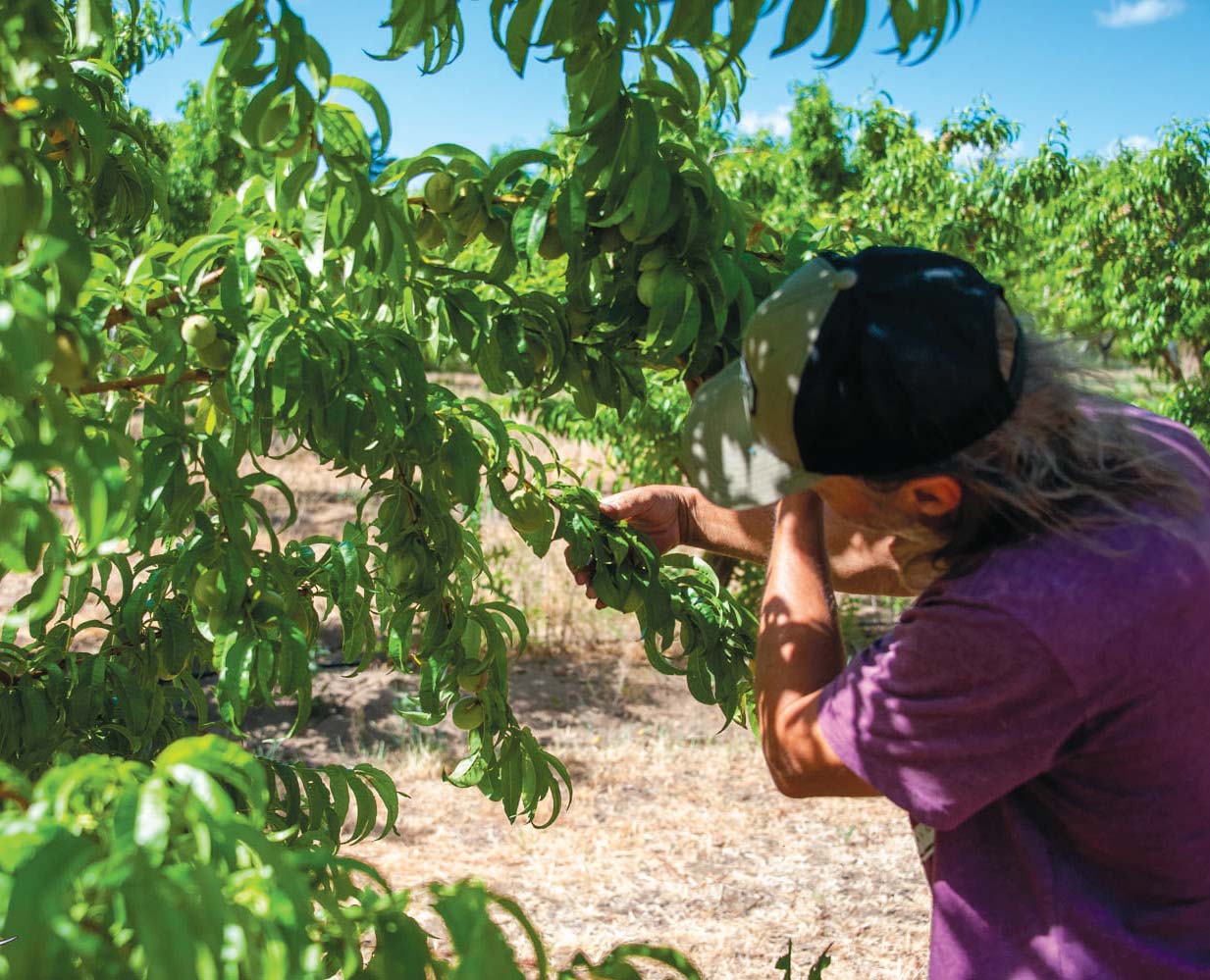
In May, we start most of our pumpkins in our greenhouse, ensuring that tiny critters do not gobble up the sprouting plants. Thousands of people and innumerable school field trips visit our pumpkin patch every October, so you can imagine how many starts we plant.
When the peaches, apricots, apples, and pears grow to the size of a quarter, Erik has a new task: thinning out 75% of them.
JULIE’S LAVENDER
Spring is also pruning time for the lavender. Julie does light pruning and shapes the lavender bushes to prep them for the summer, when the flowers start to bloom. She propagated about a hundred plants last year and plans to start another hundred this year. Currently, we have French and culinary lavender bushes. We sell the French lavender at the farmers’ markets. Julie also makes wreaths and lavender wands that we sell at our on-farm summer peach pop-ups, together with the culinary lavender. This year, we got a still and have started distilling the lavender for essential oil. The mixture of ripe peaches and blooming lavender creates a beautiful scent that we can smell across the entire farm. In a few years, we will be ready to open the farm for U-pick lavender so everyone can come to see the beauty and smell the blended aroma of peaches and lavender.
THINKING AHEAD
While the lavender U-pick is years out, Hunter Orchards has had a U-pick pumpkin patch every October for over thirty years. We grow all our pumpkins and squash. We believe in keeping it simple, ensuring that our visitors spend quality time with their family and get a real farm experience. Even though this is not until fall, we start our pumpkin patch in the late spring—when temperatures are predictably above 65 degrees, and the snow has completely melted off Black Butte Pumpkins don’t tolerate cold weather, and they need at least eight to twelve hours of sunlight daily. In May, we start most of our pumpkins in our greenhouse, ensuring that tiny critters do not gobble up the sprouting plants. Thousands of people and innumerable school field trips visit our pumpkin patch every October, so you can imagine how many starts we plant. We use seeds from the previous year’s pumpkin patch, which we harvest, wash, and dry in the winter to ensure they are ready to go in the spring. By mid-June, we are planting the starts in the pumpkin field. We grow many different varieties of pumpkins, from big Atlantic Giants to Jack-o-Lanterns. Sugar Pies and Cinderella pumpkins are the best if you want to make pies or can pumpkin puree. I’ve become addicted to heirloom pumpkins with their charming shapes and muted colors. Many patch goers use these primarily for decorating their house or front porch. I am particularly fond of the flat white. This variety is not only ornamental, but is great for use in cooked pumpkin recipes. We also tend to our apple trees in the spring to ensure we continue to offer our famous apple cider. Many people make the trip out to the farm in October just for the apple cider.
They say a labor of love produces the sweetest fruit, and in the case of Hunter Orchards, that could not be truer.
This is the first in a four-part series, in which the Ericksons describe seasonal changes and their activities each season as they farm their certified organic acres.
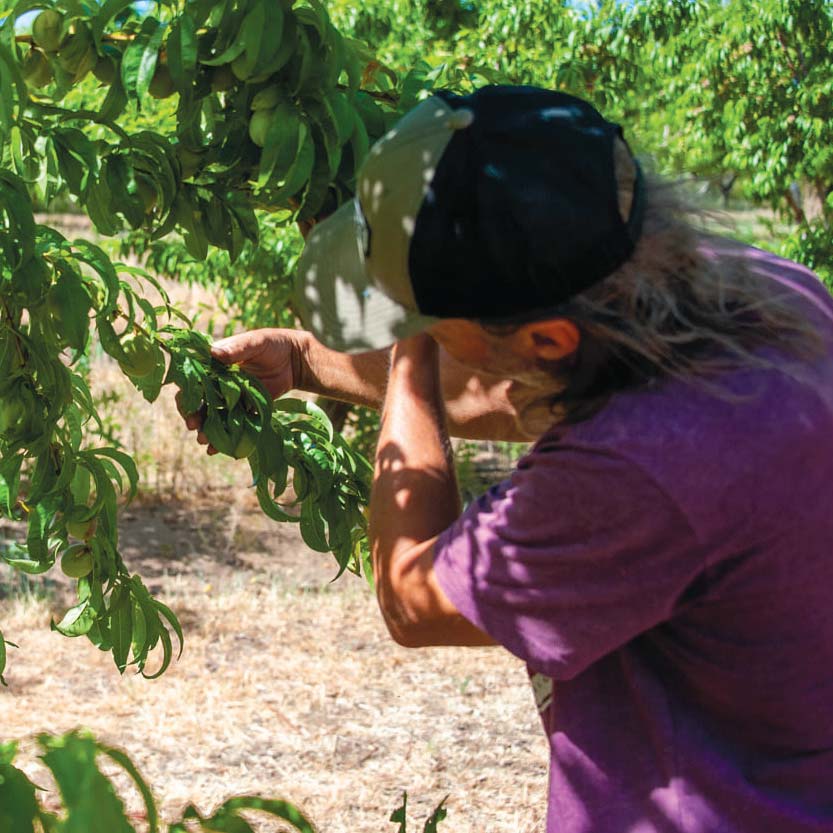
Erik and Julie Erickson own Hunter Orchards, in Grenada, just northwest of Mount Shasta, and they grow organic peaches, nectarines, apricots, apples, and pears, lavender, and heirloom pumpkins. Learn more about Hunter Orchards, including about their on-farm offerings, at hunterorchards.com and on their Facebook page: facebook.com/hunterorchards



